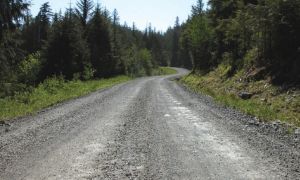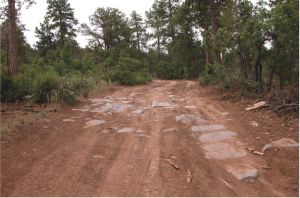Dmcrandall (talk | contribs) |
Kentsmith9 (talk | contribs) m (Removed USA subpage links) |
||
| (5 intermediate revisions by 2 users not shown) | |||
| Line 1: | Line 1: | ||
<!-- This page is only transcluded into (displayed on) the main page for this state. See more detailed instructions below. --><noinclude>{{:USA/CommonState/ReturnPurge|{{SubPage2}}}}<br/></noinclude><!-- | <!-- This page is only transcluded into (displayed on) the main page for this state. See more detailed instructions below. --><noinclude>{{:USA/CommonState/ReturnPurge|{{SubPage2}}}}<br/></noinclude><!-- | ||
------ DO NOT MODIFY ABOVE THIS LINE -------- DO NOT MODIFY ABOVE THIS LINE ------> | ------ DO NOT MODIFY ABOVE THIS LINE -------- DO NOT MODIFY ABOVE THIS LINE ------> | ||
=== Railroads === | |||
Railroads/light rail are mapped according to [[Road types#Railroad|special guidelines]] in the USA. As of 2016-06-28, '''Railroad segments should not be named''' except for special, approved cases. No such cases are currently approved in Utah. | |||
=== Routable Pedestrian Path (Walking Trail) === | |||
'''Do not map hiking or biking paths/trails'''. It is common for newer editors to see "missing" paths/trails on the map, and see a readily available Walking Trail segment type to choose from, but mapping trails in Utah is an error. If you have changed your editor language to '''US''' English, this becomes clearer as that segment type is then named "Routable Pedestrian Path." This segment type is [[Road types#Walking_Trails|routable by Waze and will cause unintended results]] for nearby destinations. There are rare cases where a Routable Pedestrian Path segment can be added to the map to improve routing, but all uses must be approved by a Routable Pedestrian Path expert. | |||
=== | === Non-Routable Pedestrian Path (Pedestrian Boardwalk) === | ||
Use of this type in Utah is currently limited to one special case: Outdoor plazas where what would otherwise be a thru-road has been converted to permanent and exclusive use by pedestrians. Map the Non-Routable Pedestrian Path as you would a basic road, but do not connect the segments to actual drivable roads (leave a 10m / 33ft gap). This use case has the sole purpose of making it obvious to all editors that there is no drivable road missing from the map, so it is not necessary if the plaza is obviously not a road (ex: Main St Plaza @ Temple Square). These segments should be locked at rank 3. | |||
=== Stairway === | |||
Do not use this type. | |||
[[ | === Off-road / Not maintained === | ||
{{Collapsible section top}} | |||
Utah follows the following functional classification for Gravel and Off-road / Not maintained trails. (expandable section) | |||
{{Collapsible section content}} | |||
{| style="border: 1px solid black; border-spacing: 0; margin: 1em auto;" | |||
|+ {{Street|Gravel Roads}} | |||
|- | |||
! colspan="3" style="border: 1px solid black; padding: 5px; background: #C0C0C0;" | Functional Classification | |||
|- | |||
| style="border: 1px solid black; padding: 5px;" | Minor Arterial {{Minor Highway}} | |||
|- | |||
| style="border: 1px solid black; padding: 5px;" | Minor Collector {{Primary Street}} | |||
|- | |||
| style="border: 1px solid black; padding: 5px;" | Local/Not Mapped {{Street}} | |||
|- | |||
| colspan="3" style="border: 1px solid black; text-align: center;" | | |||
[[File:USFS-level3a.jpg|300x250px|frameless|center]] | |||
|} | |||
{| style="border: 1px solid black; border-spacing: 0; margin: 1em auto;" | |||
|+ {{Dirt}} | |||
|- | |||
! colspan="3" style="border: 1px solid black; padding: 5px; background: #8B4513;" | Functional Classification | |||
|- | |||
| style="border: 1px solid black; padding: 5px;" | Minor Arterial {{Dirt}} | |||
|- | |||
| style="border: 1px solid black; padding: 5px;" | Minor Collector {{Dirt}} | |||
|- | |||
| style="border: 1px solid black; padding: 5px;" | Local/Not Mapped {{Dirt}} | |||
|- | |||
| colspan="3" style="border: 1px solid black; text-align: center;" | | |||
[[File:USFS-level2b.jpg|300x250px|frameless|center]] | |||
|} | |||
{{Collapsible section bottom}} | |||
Images demonstrated above cannot cover all scenarios for mapping ''maintenance level'' to Waze ''road type''. These roads may undergo variation in quality over seasons depending on the climate (rain/snow). Particularly, some gravel roads may have qualities that are closer to Off-road / Not maintained than Street. Editors with local experience and Street View images may help in this determination. | |||
=== Driveways / Private Roads === | |||
{{mbox | |||
|type= important | |||
|text= Please follow the following guidelines for Private Driveways. Wiki standard can be found here. [[Driveways]]}} | |||
'''Mapping rural diveways''' | |||
* If an address/location cannot be reasonably guided to without a private drive, it can be added. | |||
* A single house at the end of a 1 mile (1609m) long private drive = it probably isn't needed. | |||
* If it's 5 houses at the end of a single shared 1/4 mile (402m) long private drive, it probably is needed. | |||
* If it's a house at the end of a 500m (1640 ft) long private drive, which is right up against another street from which you cannot access the address (stop point will be on the segment closest), then a private drive is probably needed. | |||
Latest revision as of 23:29, 9 May 2017
Railroads
Railroads/light rail are mapped according to special guidelines in the USA. As of 2016-06-28, Railroad segments should not be named except for special, approved cases. No such cases are currently approved in Utah.
Routable Pedestrian Path (Walking Trail)
Do not map hiking or biking paths/trails. It is common for newer editors to see "missing" paths/trails on the map, and see a readily available Walking Trail segment type to choose from, but mapping trails in Utah is an error. If you have changed your editor language to US English, this becomes clearer as that segment type is then named "Routable Pedestrian Path." This segment type is routable by Waze and will cause unintended results for nearby destinations. There are rare cases where a Routable Pedestrian Path segment can be added to the map to improve routing, but all uses must be approved by a Routable Pedestrian Path expert.
Non-Routable Pedestrian Path (Pedestrian Boardwalk)
Use of this type in Utah is currently limited to one special case: Outdoor plazas where what would otherwise be a thru-road has been converted to permanent and exclusive use by pedestrians. Map the Non-Routable Pedestrian Path as you would a basic road, but do not connect the segments to actual drivable roads (leave a 10m / 33ft gap). This use case has the sole purpose of making it obvious to all editors that there is no drivable road missing from the map, so it is not necessary if the plaza is obviously not a road (ex: Main St Plaza @ Temple Square). These segments should be locked at rank 3.
Stairway
Do not use this type.
Off-road / Not maintained
Images demonstrated above cannot cover all scenarios for mapping maintenance level to Waze road type. These roads may undergo variation in quality over seasons depending on the climate (rain/snow). Particularly, some gravel roads may have qualities that are closer to Off-road / Not maintained than Street. Editors with local experience and Street View images may help in this determination.
Driveways / Private Roads
| Please follow the following guidelines for Private Driveways. Wiki standard can be found here. Driveways |
Mapping rural diveways
- If an address/location cannot be reasonably guided to without a private drive, it can be added.
- A single house at the end of a 1 mile (1609m) long private drive = it probably isn't needed.
- If it's 5 houses at the end of a single shared 1/4 mile (402m) long private drive, it probably is needed.
- If it's a house at the end of a 500m (1640 ft) long private drive, which is right up against another street from which you cannot access the address (stop point will be on the segment closest), then a private drive is probably needed.

